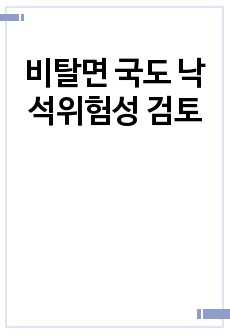* 본 문서는 배포용으로 복사 및 편집이 불가합니다.
서지정보
ㆍ발행기관 : 한국건설법무학회
ㆍ수록지정보 : 건설법무 / 1권
ㆍ저자명 : 이창범
ㆍ저자명 : 이창범
목차
Ⅰ. 서 론Ⅱ. 공동주택 하자분쟁의 제문제
1. 하자담보책임 규범판단의 제문제
2. 하자담보책임 사실판단의 제문제
Ⅲ. 하자판정 기준보완 및 준공전 점검의 강화
1. 하자판정에 논리적 3단 평가 방식
2. 현실적 대응방안(준공전 하자점검)
3. 준공전 하자점검의 방법
IV. 하자분쟁 예방을 위한 입법론
1. 집합건물 하자담보 책임기간의 일원화
2. 모든 집합건물에 대한 보증의무 조항 신설
3. 설계자와 감리자의 책임보험 규정 신설
4. 중고주택 담보책임 규정 신설
5. 담보책임의 면책조항 신설 필요
V. 결 론
참고문헌
한국어 초록
본 연구는 한국 사회의 압축적 성장과 함께 폭발적으로 증가한 아파트를 비롯한 집합건물 이라는 주거형태가 가사노동의 절감과 생활의 편익증대 등 긍정적인 요소를 가지고 있는 반면에 부실공사로 인한 문제점들이 노출되면서 하자 기획소송의 폭증으로 이어져 여러 가 지 부작용이 발생하게 된 원인과 대책을 살펴보기 위하여 규범판단 부분과 사실판단 부분 으로 대별하여 하자담보책임 규범 상호간의 부조화 또는 현상과의 불일치 문제, 하자판정 의 기준미비 등에 대한 문제점과 대안제시를 핵심내용으로 하고 있다.즉, 첫 번째로 하자담보책임 규범 상호간의 부조화 또는 현상과의 불일치 문제이다. 지금까 지 공동주택 등 집합건물에 대한 하자담보책임에 관하여 명확하고 통일적인 규정이 존재하 지 아니하여 하자보수에 관하여는 구 주택건설촉진법(현 주택법)이 적용되고 하자보수에 갈음하는 손해배상에 대하여는 민법 제667조 내지 671조가 준용되는 구 집합건물법제 9조 가 적용된다는 해석론이 득세를 하게 되면서 주택소비자들이 건축업자로부터 정상적인 절 차에 따라 하자보수를 받으려 하지 않고 금전배상만을 고집하는 부작용이 발생하였다. 이 에 대한 반작용으로 주택법이 2005년도에 개정되면서 공동주택의 하자담보책임에 관하여 주택법이 우선 적용되며 그 적용 시기도 동법 개정 전의 모든 아파트로 확대하여 소급입법 을 하기에 이르렀다. 이 주택법 부칙이 2008년도에 헌법재판소로부터 위헌판결을 받음에 따라 2012년도에는 공동주택을 포함한 모든 집합건물의 하자담보책임에 관하여 집합건물 법이 우선 적용되는 것으로 정리되었다.
그런데 집합건물의 하자보수와 관련된 2012년도의 법률개정은 집합건물과 관련된 법리상 의 오류 및 위헌요소가 일정부문 해소되었고, 마감재 등의 하자담보기간이 연장되었으며, 공동주택 구분소유자의 하자관련 권리가 강화된 반면, 분양자의 담보책임을 가중시키고 수 분양자와 직접 계약관계가 없는 시공자도 담보책임을 지도록 함으로써 시공자의 우발채무 부담을 증가시키는 방향으로 이루어졌다.
따라서 그동안 공동주택의 하자담보책임과 관련하여 주택법과 집합건물법이 상호 쟁투를 벌이듯 서로 우선 적용하는 것으로 다투다가 이를 합리적으로 정리하기 위하여 2012. 12. 28.에 주택법과 집합건물법이 모두 개정되었음에도 입법의 효과 못지않게 부정적 효과 또 한 적지 않다고 보이고 그중 핵심적인 문제점은 주택법령의 담보책임 기간과 상이하게 규 정되어 있어 특별한 사정이 없는 한 입주자는 시공자로부터 하자보수를 받으려하지 않고 여전히 금전배상을 원할 것으로 보인다.
두 번째로 하자담보책임에 관한 사실판단의 문제 즉, 하자판정기준 미비에 관한 문제이다. 이에 관하여는, 2011년 9월에 서울중앙지방법원에서 건설감정실무지침이라는 기준을 마련 해놓고 있고, 2012년 12월에 건설관련 주무부처인 국토교통부에서 제정한 ‘하자판정기준, 조사방법 및 보수비용 산정 기준’이 마련되어 있으나 여전히 미비점과 모순점이 많은 점을 감안하여, ① 하자감정의 기준이 되는 설계도서 문제, ② 하자발생 시점 특정 문제와 책임 제한, ③ 사용검사전 하자문제, ④ 중요한 하자에 대한 판단기준, ⑤ 균열보수 및 도장공사 의 범위와 방법 문제, ⑥ 실무상 공사비 산정방법의 구체적 문제점, ⑦ 건설관행에 대한 하 자판정의 구체적 문제점 등으로 항을 나누어 살펴보고 각 항목별로 하자판정에 대한 보완 적 해석론을 제시하였다.
결국 하자분쟁 예방을 위한 입법론으로, ① 집합건물의 하자담보책임 규정의 기간을 합리 적으로 손질하여 집합건물법에 일원화할 필요성, ② 하자발생시기의 특정문제로 인한 논쟁 을 종료하기 위한 입증책임 조항 신설, ③ 하자분쟁 조기 종식을 위한 하자종료합의서의 효력 인정, ④ 모든 집합건물에 대한 보증보험 가입 의무화 및 통일적 규정, ⑤ 설계 및 감 리의 책임 보험 규정 신설 등을 통하여 하자분쟁을 예방하거나 최소화하는 방향을 모색하 였다.
나아가 현실적 대안모색의 방법으로 ① 하자판정의 논리적 3단 평가방식을 형법에서 차용 하여 하자를 판단하는 일반이론을 개발할 필요성과 방법을 모색하였고, ② 부지불식간에 발생한 설계도서와 건축물간에 불일치 현상으로 인한 예기치 않은 비용 증가를 억제하기 위하여 사업주체 또는 시공자 스스로 준공전 예비감정(점검)을 시행함으로써 주택공급자는 하자소송의 위험에서 벗어나 합리적인 가격에 품질 높은 주택을 공급하며, 주택소비자는 쾌적하고 안전한 주거생활을 영위할 수 있도록 공급자와 소비자간의 균형을 도모하면서, 하자소송으로 인한 사회ㆍ경제적 낭비를 최소화할 방안을 모색하였다.
영어 초록
The number of a Condominium, including apartments, has increased drastically in Korea with rapid economic growth. While apartments have positive effects on people's lives, such as making everyday living more comfortable and reducing household workload, they entail many problems, such as explosion of class action lawsuits over construction defects. To find the causes of those problems and present countermeasures, this study takes two approaches; examination of laws and examination of facts and investigates incongruity in laws on defects liability, inconsistency between laws and realities, and inadequate standards for judging defects. First, the problem of incongruity in laws on defects liability and inconsistency between laws and realities is discussed. Until now, there is no clear and uniform law on defects liability for a Condominium, such as apartments. For the repair of construction defects, Housing Construction Promotion Act(present Housing Act) used to be applied . But for the compensation of damages instead of repair, the opinion that Article 9 of previous Act on Aggregate Building based on Article 667 or 671 of Civil Act with necessary modifications should be applied has been prevalent and housing owners have insisted monetary compensation for damages rather than repair according to regular procedure from contractors. To counter this, Housing Act was revised in 2005 as an ex post facto law. It prescribes that Housing Act applies to all defects liability first. It is applied to all apartments constructed even before the revision as it is applied retrospectively. And with the Constitutional Court's 2008 ruling that considered supplementary provisions of Housing Act unconstitutional, Act on Aggregate Buildings has been applied to all defects liability for all a Condominium including apartments, first. The number of a Condominium, including apartments, has increased drastically in Korea with rapid economic growth. While apartments have positive effects on people's lives, such as making everyday living more comfortable and reducing household workload, they entail many problems, such as explosion of class action lawsuits over construction defects. To find the causes of those problems and present countermeasures, this study takes two approaches; examination of laws and examination of facts and investigates incongruity in laws on defects liability, inconsistency between laws and realities, and inadequate standards for judging defects. First, the problem of incongruity in laws on defects liability and inconsistency between laws and realities is discussed. Until now, there is no clear and uniform law on defects liability for a Condominium, such as apartments. For the repair of construction defects, Housing Construction Promotion Act(present Housing Act) used to be applied . But for the compensation of damages instead of repair, the opinion that Article 9 of previous Act on Aggregate Building based on Article 667 or 671 of Civil Act with necessary modifications should be applied has been prevalent and housing owners have insisted monetary compensation for damages rather than repair according to regular procedure from contractors. To counter this, Housing Act was revised in 2005 as an ex post facto law. It prescribes that Housing Act applies to all defects liability first. It is applied to all apartments constructed even before the revision as it is applied retrospectively. And with the Constitutional Court's 2008 ruling that considered supplementary provisions of Housing Act unconstitutional, Act on Aggregate Buildings has been applied to all defects liability for all a Condominium including apartments, first.Until now, there have been disputes over which law should be applied first to defects liability of apartments. Even though, both Housing Act and Aggregate Building Act were revised on Dec. 28, 2012, there are still negative effects, which is as large as positive effects. The core problem is that liability periods are different. As a result, it is expected that an individual owner will continue to want monetary compensation rather than repair from the constructor.
In addition, in the case of multipurpose building has consists commercial area, neighborhood living facility area, and residential area in the same building, different liability periods apply to the same type of defect according to the use, which is irrational.
Therefore, liability periods for a Condominium should be unified and the expiration point of liability period should be unified into exclusion period to settle disputes quickly and prevent confusion.
Housing laws specify the procedure and method of defects liability termination agreement but specific regulations on its effects have not been established, so they need to be legislated. And specific regulations on the burden of proof for the occurrence of defect should be established to solve the disputes and discontents over the point of defect occurrence.
Second, the problem of judgment of facts on defects liability, i.e. inadequate standards for judging defect, is discussed. Regarding this, Seoul Central District Court prepared Guidelines for Construction Appraisal Practices in September 2011 and Ministry of Land, Infrastructure, and Transport, the competent authority in charge of construction, established Defect Evaluation Standards, Investigation Method, and Repair Cost Assessment Standards in Dec. 2012. However, there are still inadequacies and contradictions. So, this study examines the following items and presents supplementary interpretations for judging defects by item; ① The problems related to design documents, the base of defect appraisal, ② The problems related to the point of defect occurrence and limited liability, ③ The problems related to defects found before the inspection for the approval of use, ④ Standards for judging important defects, ⑤ The problems related to the scope and method of crack repair and painting, ⑥ The specific problems related to the calculation of construction cost, and ⑦ The specific problems of judging defects related to construction practices.
In short, to find rational interpretations for the problems in defect related lawsuits, this study examined and analyzed defect related precedents for the last 10 years and explored ways to minimize or prevent building defect disputes through the following as the arguments for the legislation of regulations to prevent defect disputes; ① The necessity to rationally unify the defect liability periods into one in Act on Aggregate Buildings, ② Inclusion of burden of proof provision in the law to end the disputes over the point of defect occurrence, ③ Recognition of the effectiveness of defects liability termination agreement, ④ Making subscription of surety insurance by all a Condominium mandatory and establishment of unified regulations, and ⑤ Establishment of regulations on design and audit liability insurance. And as the realistic alternatives, this study ① explored the necessity and methods to develop general theory for the judgment of defects by deriving logical 3 step evaluation method for judging defects from Criminal Act, and ② explored ways to curb cost increase due to unwitting inconsistency between design documents and buildings, to bring balance between the supplier and the consumer through the project owner or constructor's preliminary inspection before construction completion so that the supplier is freed from the risk of defect lawsuits and provides high quality housing at reasonable price and the consumer enjoys comfortable and safe housing, and ways to minimize social and economic wastes due to defect lawsuits.



























